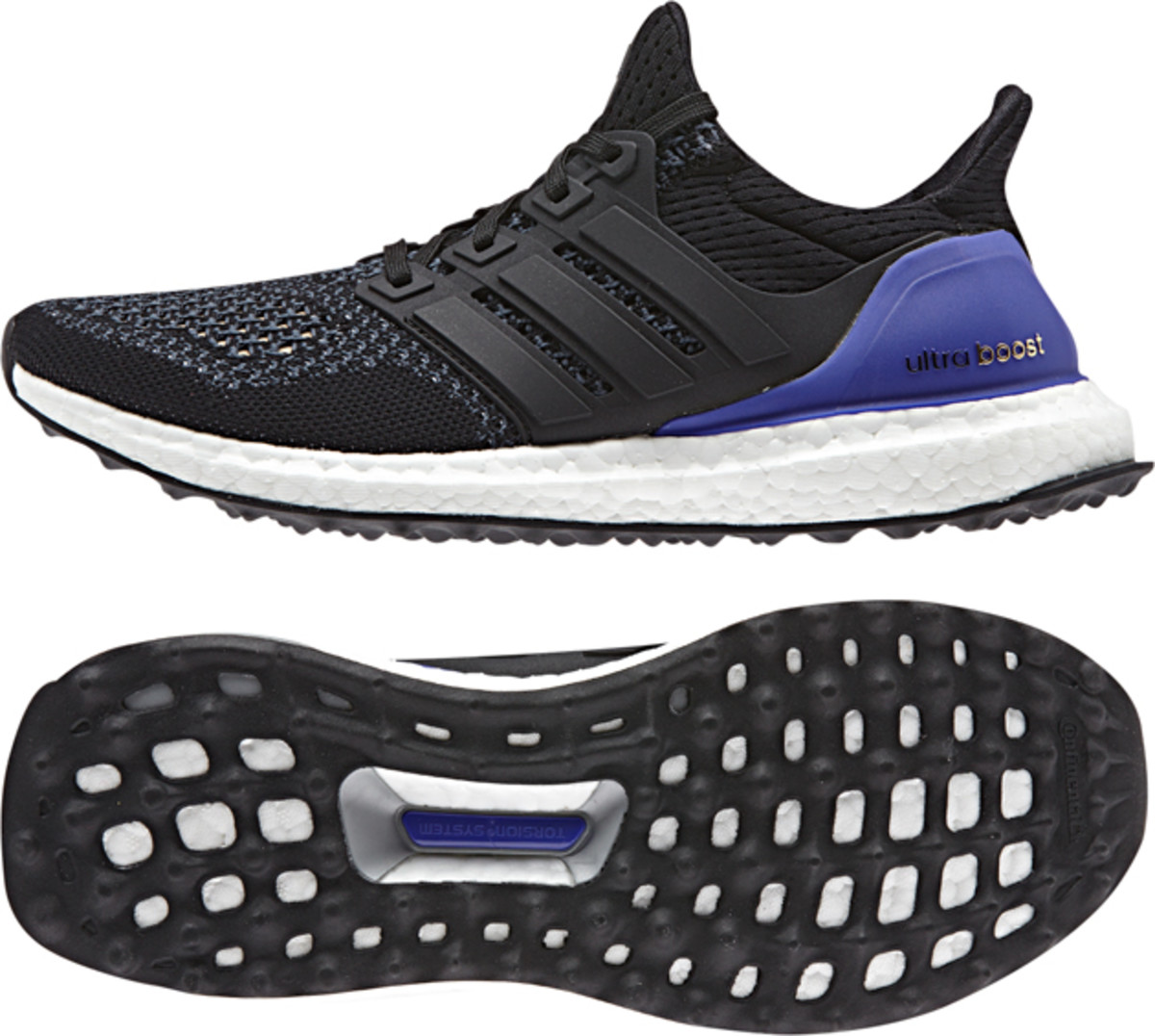Tech Talk: Adidas unveils Ultra Boost with latest running shoe technology

Let’s go back to February 2013, to a convention center in New York City. It was then and there that Adidas launched Energy Boost, a new cushioning system that used 2,000 pea-sized, heat-welded capsules built from thermoplastic polyurethane foam that outperforms EVA foam in energy return, cushioning and durability.
- MORE: SI.com sneaker hub: Everything Air Jordans, adidas and more
Now, two years later, Adidas says that they’ve made Boost even better and added new technologies with the energy-focused sole to create a first-of-its-kind running shoe. They call it the Ultra Boost.
What is it?
The Ultra Boost features the first combination of the improved Boost technology with a four-way-stretch Primeknit upper. A completely new type of outsole merges different technologies into one shoe that Adidas claims allows for full natural movement of the foot while providing the most energy return of any cushioning system on the running market.
How does it work?
It all starts with the Ultra Boost technology. The original Energy Boost still contained 20 percent EVA foam, a “carrier,” Mikal Peveto, Adidas’ director of running, tells Edge’s Tech Talk ahead of the Ultra Boost reveal. By removing that carrier and upping the Boost area 20 percent, Adidas bumped from 2,000 capsules to 3,000, all without making the sole any thicker.
“We have learned and tested and modified and got to the point where we have the first performance-based shoe with 100 percent Boost,” he says.
But while Boost returns more energy and absorbs more impact than typical foam—and any other product on the market, Peveto says—Adidas has found other things it likes about the pellets originally created with the help of chemical manufacturer BASF.
Tech Talk: Bending the power with Asics’ new tennis racket
“We found with Boost, because these 3,000 capsules are independent of each other and fused together, this created an inherently flexible product,” he says.
No longer does Adidas need to cut grooves in its foam—or rubber outsole—to allow the 26 bones in a foot to enjoy natural movement. Using a 3D optical deformation analysis camera, the same type Boeing and NASA use to measure how much stress is put on the wings of an airplane during takeoff, Adidas measured what happens to a foot inside a shoe. They found out that the foot expands up to one centimeter during a running gait.
Using a stretch web outsole to protect the Boost and provide traction underfoot, the Ultra Boost can fully stretch during running, as opposed to a solid piece of rubber locking in the energy. “Through this lattice design,” Peveto says, “we open it up and allow for natural expansion.”
The addition of an anatomically designed heel counter and midfoot stability that decouples the movement of the heel and forefoot all aim for movement-enabled support.
Using four-way engineered knit—designers can engineer support or breathability as needed—with elastane for stretch, Adidas claims the Ultra Boost will move with the foot more than ever, from bottom to top.
Why’s it significant?
Traditionally, finding that sweet spot of natural movement and top-notch cushioning has required a compromise, since the two are at odds with each other. Adidas claims, however, that they are opening up more natural movement while adding more energy absorption and return than ever before.

What are the implications in the world of footwear?
Adidas has found a technology it can hang its hat—or shoes—on with Boost. By upgrading Energy Boost to Ultra Boost, Adidas has opened up more energy return within the same size sole. Expect this only ro continue through all of Adidas footwear.
What are the downsides?
As Peveto points out, there is no footwear category that contains the astounding number of niche brands as running. And as runners see their footwear as a tool, it can be difficult to persuade them to change those tools. Or even to try a different one. The Boost technology has proven popular already and only competition stands in its way at this point.
Who’s using it already?
The Ultra Boost version launches on Feb. 11, but the Energy Boost has already started to spread well beyond running, entering signature basketball sneakers, golf, baseball and even action sports for skateboarding shoes and snowboarding boots. The Ultra Boost version will start to infiltrate all those areas as well.
What’s the future of it going forward?
For Adidas? Plenty of Ultra Boost. As mentioned, the Energy Boost product has started to expand, and as the German-based company continues to explore the manufacturing process it has developed with Boost technology, expect it to permeate throughout all its footwear lines.
With the manufacturing of Boost taking place in Germany—even the machines used to manufacture Boost are constructed in Germany—outside of a traditional shoe factory, Adidas has a full grip on the technology and how to incorporate it into varying footwear categories.
“My guess is we will keep adopting all the best practices,” says Peveto regarding both the Boost and four-way Primeknit material. “I wouldn’t be surprised to see this as a mainstay combination.”
February 2013 proves important to understanding the love Adidas has for Boost. But like any good relationship, that loves continues to grow, to expand. Naturally.
Tim Newcomb covers stadiums, design and gear for Sports Illustrated. Follow him on Twitter at @tdnewcomb.
